Family & Children Health › Get Pregnancy › How In Vitro Fertilization Works
IVF now fastest way to get pregnant,When you get exhausted with all the other ways of trying to get pregnant,then probably IVF is the next step suggested by the infertility specialists.
What is IVF?
In the process of in vitro fertilization (IVF),eggs and sperm are brought together in a laboratory glass dish to allow the sperm to fertilize an egg.With IVF, you can use any combination of your own eggs and sperm and donor eggs and sperm.Since the birth of Louise Brown,the first test-tube baby in 1978,IVF has resulted in over 3,000,000 babies worldwide.Pregnancy rates and live birth rates have improved over the past few years,leading to a steady increase in the number of IVF treatment cycles performed worldwide.IVF success rates have dramatically improved with the advancement of technology.More and more womens over the age of 40 are opting for IVF treatment.
IVF treatment is recommended to the couples who have the problems related to
* Absent or blocked fallopian tubes
* Severe male factor infertility (sperm counts or sperm motility is low)
* Women with endometriosis.
* Infrequent ovulation
* Unexplained infertility
* Ovarian failure (donor eggs would be required in this case)
Although IVF has a high rate of success in helping couples to become pregnant,it has some disadvantages as well,including high costs in some parts of the world and an increased rate of multiple gestation (ie, twins or triplets).
In Vitro Procedure followed in IVF treatment.
The IVF procedure is unique to each couple and depends on many factors.If the reason that you are undertaking an IVF procedure is unexplained infertility,then you are actually lucky because the process will be shorter and is simple.It will also cost you less.If your reasons for IVF procedure are due to more complicated female issues,or if there are sperm problems,then more will be involved.The IVF procedure in other instances is not a lot different,but you will undergo more testing,and the sperm will need to be treated before fertilization.
IVF cycle consists of several steps over an interval of 4-6 weeks and start when a woman begins taking drugs to stimulate her ovaries to produce eggs,monitoring progress by ultrasound scan and blood tests,collecting eggs,collecting man’s sperm, fertilizing the eggs outside the woman's body in a culture dish or test-tube, transferring the embryo into the womb and end by the pregnancy test.Any remaining embryos of good quality may then be frozen for future use.More than one cycle of IVF treatment is often necessary before pregnancy occurs.Unfortunately,some women do not become pregnant despite multiple IVF attempts.
What to do with unused Fertilised Embryos?
Embryo freezing is a well-established form of assisted conception treatment.Embryos that are not transferred may be stored by freezing them (called cryopreservation).Because some embryos do not survive the thawing process, the chances of a successful pregnancy using frozen embryos is usually lower than that when using fresh embryos.An increasing number of IVF clinics worldwide are now able to freeze spare embryos for later transfer.The first frozen embryo baby was born in 1984. Embryo cryopreservation allows multiple embryo transfers from a single egg collection and improves the chances of livebirth.
The embryos may be cryopreserved for an unlimited period of time.Frozen embryos are less expensive and less invasive for a woman, because superovulation and egg retrieval aren't necessary.
What are the possible complications of IVF treatment?/Side effects of treatment
IVF is basically a safe procedure.FSH injections do not cause side effects directly.However,the ovaries become enlarged during treatment,which can cause abdominal swelling and discomfort, and in more severe cases,nausea or even vomiting.In extreme cases of Ovarian hyperstimulation syndrome (OHSS) the woman may develop severe abdominal pain,vomiting,and if untreated,blood clots in the legs or lungs and fluid imbalances in the blood. However,as with any surgical procedure,a few patients will experience side effects and complications.The most common complications associated with IVF treatment are the failure of treatment,problems experienced as a consequence of ovarian stimulation,the risk of multiple pregnancy,the risks associated with egg collection and the possibility of ectopic pregnancy.In addition,to complications that arise from IVF treatments,there are serious errors or near misses including loss of embryos,sperm or egg.In most cases,either the wrong sperm was injected into an egg,or the embryos were destroyed accidentally,or even implanted into another woman.Although these errors are extremely rare,they cause unimaginable heartache and anguish to couples longing for a baby.
TESTING FOR PREGNANCY AFTER IN VITRO FERTILIZATION
Approximately two weeks after the embryo transfer,a blood or urine test that signifies pregnancy,is done.This period is often the hardest part of an IVF cycle for the patient,because of the agony and suspense of waiting to find out if a pregnancy has occurred.This can be determined by a blood test, which measures the level of the hormone,HCG ( human chorionic gonadotropin) only 10 to 14 days after the transfer.For many patients, these 14 days are often the longest days of their life.A positive beta HCG level of more than 10 miU/ml) means you are pregnant, and the doctor will then monitor your pregnancy to confirm it is healthy.An ultrasound is done after 3 to 4 weeks after the transfer to confirm pregnancy.
WHEN IN VITRO FERTILIZATION IS NOT SUCCESSFUL
The chance of an individual couple of having a baby following one completed cycle of IVF treatment depends on two main factors.Firstly,the overall success rate of the treatment clinic (centre) and secondly,the characteristics of couple seeking treatment.Overall,approximately 27 percent of IVF cycles will end in a live birth,and the cumulative chances of success are higher when more than one cycle of IVF is done. However, an individual's chance of success depends on several factors including the woman's age,cause of infertility,use of donated eggs,donor embryos or donor sperm,number of embryos transferred,duration of infertility,number of previous IVF treatment cycles,previous pregnancy and live birth,the presence of hydrosalpinges,basal FSH and LH levels (ovarian reserve),uterine fibroids,lifestyle,smoking and emotional distress.The overall live birth rate per treatment cycle is rising steadily by approximately 1% a year. Each age group has experienced significant increases in success rates.
Maximizing Chances For Success after IVF
The women should avoid unnecessary medications then the prescribed ones,smoking,alcohol,caffeinated beverages,hot tub bath and the saunas.A healthy well balanced diet works best during the ivf treatment.Atleast three months prior to the treatment men should avoid sitting in hot tubs and saunas,drugs, alcohol, and cigarette smoking.If having fever one or two months before the IVF treatment he should report to the doctor as it may adversely affect the sperm quality.
Analyse the reason for failed IVF cycle
If you don't get pregnant after your IVF attempt, you are likely to be very disappointed and disheartened.However,remember that this is not the end of the road - it's just the beginning ! At the end of the IVF cycle, you discuss with your doctor the reasons for failed ivf cycle.Was the ovarian response good ? Was the endometrium receptive ? Did fertilisation occur ? Was the embryo transfer easy and atraumatic ? Why didn't pregnancy occur ? Can you repeat the same treatment,or do you need to make changes before going in for your next attempt ?When can you go in for your next IVF cycle ? And even if you do not get pregnant,at least the fact that you attempted IVF should give you peace of mind that you tried your best,using the latest technology medical science has to offer.
India appears very good options and clearly comes out as the cheapest country on IVF treatment and IVF cost. India also has the benefit of a vast amount of experience – they were the second country in the world to have a successful pregnancy with IVF,only a couple of month after the UK in 1978. In India many of the doctors have been trained and have practiced in the West and are fluent in English.
Uncovere a wealth of valuable information that can significantly increase a couple's chances of pregnancy through IVF.
Facing infertility and undergoing treatment for the same is without doubt one of the most distressing situations that a couple can face. It fosters uncertainities, doubts, fears, guilt and apprehensions.We at Rotunda strive towards making the whole process as simple and transparent as possible, providing guidance and counselling at every step. We boast of a team sensitised to the needs of our clients and have a long track record to prove this. Most of all,we respect our clients' need for privacy and offer this and much much more at very reasonable and competitive rates.
Contact Rotunda Clinic for more detailed information on affordable IVF Infertility Surgery,IVF Treatment, Infertility Clinic India,IVF Clinic Mumbai,India, Rotunda Fertility Clinic,in vitro fertilisation.IVF cycle,success after IVF,ivf,ivf success,ivf stories,ivf cost,ivf India,low sperm count,male infertility,egg donor,trying to get pregnant,infertility clinic,fertility clinic,fertility center,fertility clinic,in vitro fertilization,icsi,ultrasound,ivf failure,failed ivf,failed ivf treatment,failed ivf procedure ,new ivf clinic website.
Contact us to know Ways to overcome infertility and start Creating your family today by contacting at Rotunda-The Center for Human Reproduction or simply log on at http://www.rotundaivf.com/index.php/aboutus.html or http://www.rotunda.co.in or
http://www.wewantababy.com or simply a phone call at +91 22 2655 2000 or +91 22 26405000.
What is IVF?
In the process of in vitro fertilization (IVF),eggs and sperm are brought together in a laboratory glass dish to allow the sperm to fertilize an egg.With IVF, you can use any combination of your own eggs and sperm and donor eggs and sperm.Since the birth of Louise Brown,the first test-tube baby in 1978,IVF has resulted in over 3,000,000 babies worldwide.Pregnancy rates and live birth rates have improved over the past few years,leading to a steady increase in the number of IVF treatment cycles performed worldwide.IVF success rates have dramatically improved with the advancement of technology.More and more womens over the age of 40 are opting for IVF treatment.
IVF treatment is recommended to the couples who have the problems related to
* Absent or blocked fallopian tubes
* Severe male factor infertility (sperm counts or sperm motility is low)
* Women with endometriosis.
* Infrequent ovulation
* Unexplained infertility
* Ovarian failure (donor eggs would be required in this case)
Although IVF has a high rate of success in helping couples to become pregnant,it has some disadvantages as well,including high costs in some parts of the world and an increased rate of multiple gestation (ie, twins or triplets).
In Vitro Procedure followed in IVF treatment.
The IVF procedure is unique to each couple and depends on many factors.If the reason that you are undertaking an IVF procedure is unexplained infertility,then you are actually lucky because the process will be shorter and is simple.It will also cost you less.If your reasons for IVF procedure are due to more complicated female issues,or if there are sperm problems,then more will be involved.The IVF procedure in other instances is not a lot different,but you will undergo more testing,and the sperm will need to be treated before fertilization.
IVF cycle consists of several steps over an interval of 4-6 weeks and start when a woman begins taking drugs to stimulate her ovaries to produce eggs,monitoring progress by ultrasound scan and blood tests,collecting eggs,collecting man’s sperm, fertilizing the eggs outside the woman's body in a culture dish or test-tube, transferring the embryo into the womb and end by the pregnancy test.Any remaining embryos of good quality may then be frozen for future use.More than one cycle of IVF treatment is often necessary before pregnancy occurs.Unfortunately,some women do not become pregnant despite multiple IVF attempts.
What to do with unused Fertilised Embryos?
Embryo freezing is a well-established form of assisted conception treatment.Embryos that are not transferred may be stored by freezing them (called cryopreservation).Because some embryos do not survive the thawing process, the chances of a successful pregnancy using frozen embryos is usually lower than that when using fresh embryos.An increasing number of IVF clinics worldwide are now able to freeze spare embryos for later transfer.The first frozen embryo baby was born in 1984. Embryo cryopreservation allows multiple embryo transfers from a single egg collection and improves the chances of livebirth.
The embryos may be cryopreserved for an unlimited period of time.Frozen embryos are less expensive and less invasive for a woman, because superovulation and egg retrieval aren't necessary.
What are the possible complications of IVF treatment?/Side effects of treatment
IVF is basically a safe procedure.FSH injections do not cause side effects directly.However,the ovaries become enlarged during treatment,which can cause abdominal swelling and discomfort, and in more severe cases,nausea or even vomiting.In extreme cases of Ovarian hyperstimulation syndrome (OHSS) the woman may develop severe abdominal pain,vomiting,and if untreated,blood clots in the legs or lungs and fluid imbalances in the blood. However,as with any surgical procedure,a few patients will experience side effects and complications.The most common complications associated with IVF treatment are the failure of treatment,problems experienced as a consequence of ovarian stimulation,the risk of multiple pregnancy,the risks associated with egg collection and the possibility of ectopic pregnancy.In addition,to complications that arise from IVF treatments,there are serious errors or near misses including loss of embryos,sperm or egg.In most cases,either the wrong sperm was injected into an egg,or the embryos were destroyed accidentally,or even implanted into another woman.Although these errors are extremely rare,they cause unimaginable heartache and anguish to couples longing for a baby.
TESTING FOR PREGNANCY AFTER IN VITRO FERTILIZATION
Approximately two weeks after the embryo transfer,a blood or urine test that signifies pregnancy,is done.This period is often the hardest part of an IVF cycle for the patient,because of the agony and suspense of waiting to find out if a pregnancy has occurred.This can be determined by a blood test, which measures the level of the hormone,HCG ( human chorionic gonadotropin) only 10 to 14 days after the transfer.For many patients, these 14 days are often the longest days of their life.A positive beta HCG level of more than 10 miU/ml) means you are pregnant, and the doctor will then monitor your pregnancy to confirm it is healthy.An ultrasound is done after 3 to 4 weeks after the transfer to confirm pregnancy.
WHEN IN VITRO FERTILIZATION IS NOT SUCCESSFUL
The chance of an individual couple of having a baby following one completed cycle of IVF treatment depends on two main factors.Firstly,the overall success rate of the treatment clinic (centre) and secondly,the characteristics of couple seeking treatment.Overall,approximately 27 percent of IVF cycles will end in a live birth,and the cumulative chances of success are higher when more than one cycle of IVF is done. However, an individual's chance of success depends on several factors including the woman's age,cause of infertility,use of donated eggs,donor embryos or donor sperm,number of embryos transferred,duration of infertility,number of previous IVF treatment cycles,previous pregnancy and live birth,the presence of hydrosalpinges,basal FSH and LH levels (ovarian reserve),uterine fibroids,lifestyle,smoking and emotional distress.The overall live birth rate per treatment cycle is rising steadily by approximately 1% a year. Each age group has experienced significant increases in success rates.
Maximizing Chances For Success after IVF
The women should avoid unnecessary medications then the prescribed ones,smoking,alcohol,caffeinated beverages,hot tub bath and the saunas.A healthy well balanced diet works best during the ivf treatment.Atleast three months prior to the treatment men should avoid sitting in hot tubs and saunas,drugs, alcohol, and cigarette smoking.If having fever one or two months before the IVF treatment he should report to the doctor as it may adversely affect the sperm quality.
Analyse the reason for failed IVF cycle
If you don't get pregnant after your IVF attempt, you are likely to be very disappointed and disheartened.However,remember that this is not the end of the road - it's just the beginning ! At the end of the IVF cycle, you discuss with your doctor the reasons for failed ivf cycle.Was the ovarian response good ? Was the endometrium receptive ? Did fertilisation occur ? Was the embryo transfer easy and atraumatic ? Why didn't pregnancy occur ? Can you repeat the same treatment,or do you need to make changes before going in for your next attempt ?When can you go in for your next IVF cycle ? And even if you do not get pregnant,at least the fact that you attempted IVF should give you peace of mind that you tried your best,using the latest technology medical science has to offer.
India appears very good options and clearly comes out as the cheapest country on IVF treatment and IVF cost. India also has the benefit of a vast amount of experience – they were the second country in the world to have a successful pregnancy with IVF,only a couple of month after the UK in 1978. In India many of the doctors have been trained and have practiced in the West and are fluent in English.
Uncovere a wealth of valuable information that can significantly increase a couple's chances of pregnancy through IVF.
Facing infertility and undergoing treatment for the same is without doubt one of the most distressing situations that a couple can face. It fosters uncertainities, doubts, fears, guilt and apprehensions.We at Rotunda strive towards making the whole process as simple and transparent as possible, providing guidance and counselling at every step. We boast of a team sensitised to the needs of our clients and have a long track record to prove this. Most of all,we respect our clients' need for privacy and offer this and much much more at very reasonable and competitive rates.
Contact Rotunda Clinic for more detailed information on affordable IVF Infertility Surgery,IVF Treatment, Infertility Clinic India,IVF Clinic Mumbai,India, Rotunda Fertility Clinic,in vitro fertilisation.IVF cycle,success after IVF,ivf,ivf success,ivf stories,ivf cost,ivf India,low sperm count,male infertility,egg donor,trying to get pregnant,infertility clinic,fertility clinic,fertility center,fertility clinic,in vitro fertilization,icsi,ultrasound,ivf failure,failed ivf,failed ivf treatment,failed ivf procedure ,new ivf clinic website.
Contact us to know Ways to overcome infertility and start Creating your family today by contacting at Rotunda-The Center for Human Reproduction or simply log on at http://www.rotundaivf.com/index.php/aboutus.html or http://www.rotunda.co.in or
http://www.wewantababy.com or simply a phone call at +91 22 2655 2000 or +91 22 26405000.
Article By: Rotunda Ivf
Get Pregnant After 35 (and 40!)
A Myth-Proof Guide to Getting Pregnant
How to get Pregnant Faster – Top Ten Tips
A Quick Guide On How To Get Pregnant
When is the best time to get pregnant?
How does baby aspirin help with trying to get pregnant?
Twenty things you should do before you try to get pregnant
Most Read
New Articles
Most Viewed
Most Downloads
 Basal Cell Carcinoma ("Rodent Ulcer" Type)
Basal Cell Carcinoma ("Rodent Ulcer" Type)
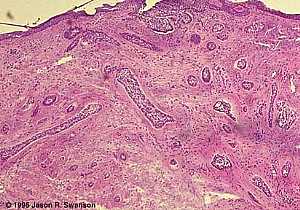 Basal Cell Carcinoma (Histology-Morpheaform Type)
Basal Cell Carcinoma (Histology-Morpheaform Type)
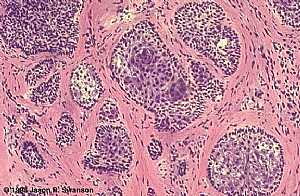 Basal Cell Carcinoma (Histology-Nodular Type - High power)
Basal Cell Carcinoma (Histology-Nodular Type - High power)
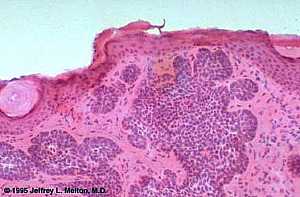 Basal Cell Carcinoma (Histology-Nodular Type- High power)
Basal Cell Carcinoma (Histology-Nodular Type- High power)
 Skin
Skin
 Nervous System -- Basic
Nervous System -- Basic
 Brain anatomy
Brain anatomy
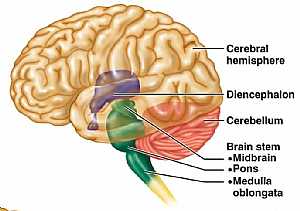 Brain anatomy
Brain anatomy
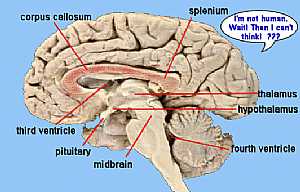 Brain anatomy
Brain anatomy
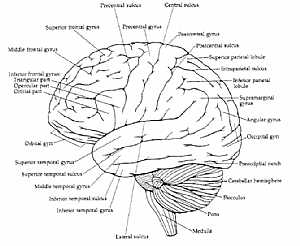 Brain anatomy
Brain anatomy
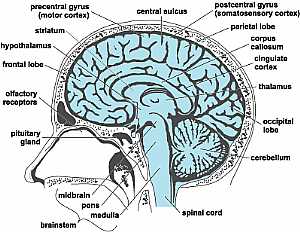 Head anatomy
Head anatomy
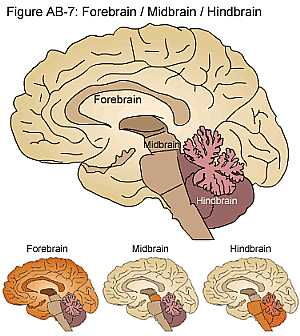 Brain anatomy
Brain anatomy
eDoctorOnline.com does not provide medical advice, diagnosis or treatment.
© Copyright 2001-2022 eDoctorOnline.com
© Copyright 2001-2022 eDoctorOnline.com

 Nose anatomy
Nose anatomy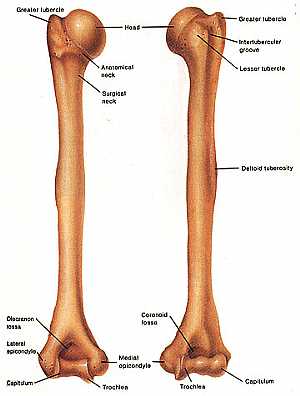 Humerus bone
Humerus bone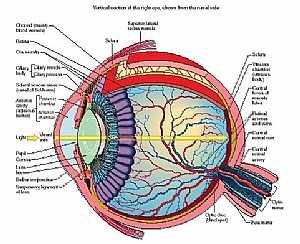 Eye anatomy
Eye anatomy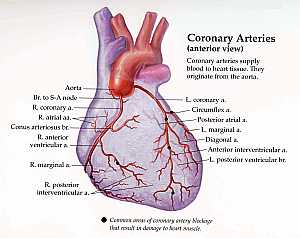 Coronary arteries anatomy
Coronary arteries anatomy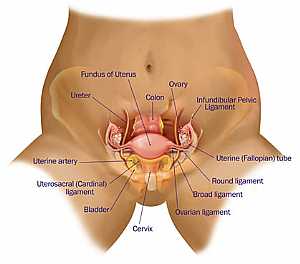 Female pelvic anatomy
Female pelvic anatomy Heart and lung anatomy
Heart and lung anatomy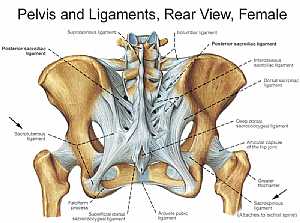 Bones and ligaments of the FEMALE Pelvis
Bones and ligaments of the FEMALE Pelvis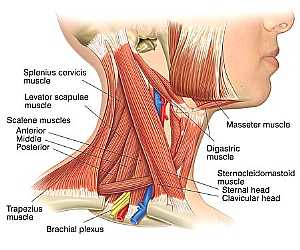 Neck Anatomy
Neck Anatomy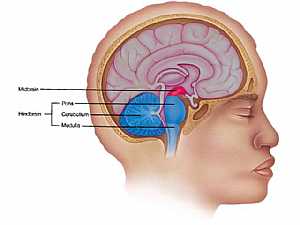 MidBrain anatomy
MidBrain anatomy Oral Cavity
Oral Cavity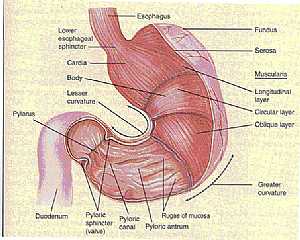 Stomach anatomy
Stomach anatomy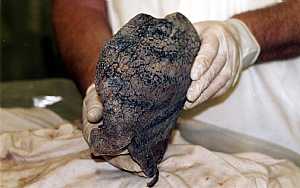 Lung anatomy
Lung anatomy Basal Cell Carcinoma ("Rodent Ulcer" Type)
Basal Cell Carcinoma ("Rodent Ulcer" Type) Basal Cell Carcinoma (Histology-Morpheaform Type)
Basal Cell Carcinoma (Histology-Morpheaform Type) Basal Cell Carcinoma (Histology-Nodular Type - High power)
Basal Cell Carcinoma (Histology-Nodular Type - High power) Basal Cell Carcinoma (Histology-Nodular Type- High power)
Basal Cell Carcinoma (Histology-Nodular Type- High power) Skin
Skin Nervous System -- Basic
Nervous System -- Basic Brain anatomy
Brain anatomy Brain anatomy
Brain anatomy Brain anatomy
Brain anatomy Brain anatomy
Brain anatomy Head anatomy
Head anatomy Brain anatomy
Brain anatomy
Be the first one to comment on this article!